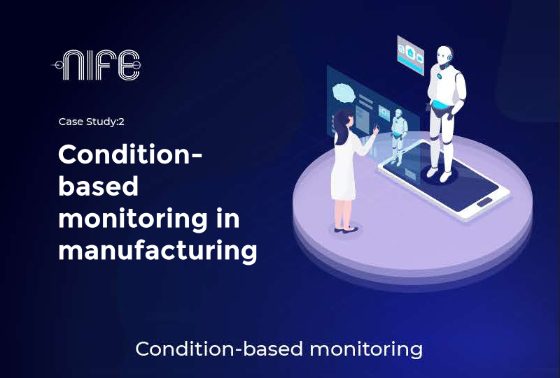Condition-Based Monitoring at Edge - An Asset to Equipment Manufacturers
Large-scale manufacturing units, especially industrial setups, have complicated equipment. Condition-based monitoring at the edge is unprecedented. Can this cost be reduced?
Learn More!

Background#
The world is leaning toward the Industrial 4.0 transformation, and so are the manufacturers. The manufacturers are moving towards providing services rather than selling one-off products. Edge computing in manufacturing is used to collect data, manage the data, and run the analytics. It becomes essential to monitor assets, check for any faults, and predict any issues with the devices. Real-time data analysis of assets detects faults so we can carry out maintenance before the failure of the system occurs. We can recognize all the faulty problems with the equipment. Hence, we need condition-based monitoring.
Why Edge Computing for Condition-Based Monitoring?#

Edge computing is used to collect data and then label it, further manage the data, and run the system's analytics. Then, we can send alerts to the end enterprise customer and the OEM to notify them when maintenance service is required. Using network edge helps eliminate the pain of collecting data from many disparate systems or machines.
The device located close to the plants or at the edge of the network provides condition-based monitoring, preempts early detection, and correction of designs, ensuring greater productivity for the plant.
Key Challenges and Drivers of Condition-Based Monitoring at Edge#
- Device Compatibility
- Flexibility in Service
- Light Device Support
- Extractive Industries
Solution#
To detect machinery failures, the equipment has a layer of sensors. These sensors pick up the information from the devices and pass it to a central processing unit.
Here, edge computing plays a crucial part in collecting and monitoring via sensors. The data from the sensors help the OEM and the system administrators monitor the exact device conditions, reducing the load on the end device itself. This way, administrators can monitor multiple sensors together. With the generation of the events, failure on one device can be collated with another device.
Edge also allows processing regardless of where the end device is located or if the asset moves. The same application can be extended to other locations. Alternatively, using edge helps remove the pain of collecting data from many disparate systems/machines in terms of battery.
The edge computing system based on conditions is used to collect statistics, manage the data, and run the analytics without any software hindrance. A system administrator can relax as real-time data analysis detects faults to carry out maintenance before any failure occurs.
Condition-based monitoring can be used in engineering and construction to monitor the equipment. Administrators can use edge computing industrial manufacturing for alerts and analytics.
On-Prem vs. Network Edge#
Given that the on-prem edge is lightweight, it's easy to place anywhere on the location. On the other hand, installing a device is overridden if the manufacturing unit decides to go with the network edge; hence, flexibility is automatically achieved.
How Does Nife Help with Condition-Based Monitoring at Edge?#
Use Nife as a network edge device to compute and deploy applications close to the industries.
Nife works on collecting sensor information, collating it, and providing immediate response time.
Benefits and Results#
- No difference in application performance (70% improvement from Cloud)
- Reduce the overall price of the Robots (40% Cost Reduction)
- Manage and monitor all applications in a single pane of glass
- Seamlessly deploy and manage navigation functionality (5 min to deploy, 3 min to scale)
Edge computing is an asset to different industries, especially device manufacturers, helping them reduce costs, improve productivity, and ensure that administrators can predict device failures.
You might like to read through this interesting topic of Edge Gaming!